Bio-Construction with cannabis plants
List of contents
Ecology and versatility of hemp
Cannabis Sativa is a plant with many facets, providing a lot of benefits and uses aside to its psychoactive traits, known as marijuana.
Aside from using its flowers, its resin and its terpenes to make extracts, creams, cosmetic of cannabis, medicine, and using their seeds in nutrition, we can work with their stems and branches to extract from it the most long and resistant plant fiber of the nature and with which we can develop multitude of things such as fuel, fertilisers, inks, adhesives, lubricants, as well as clothing, musical instruments, etc. ...
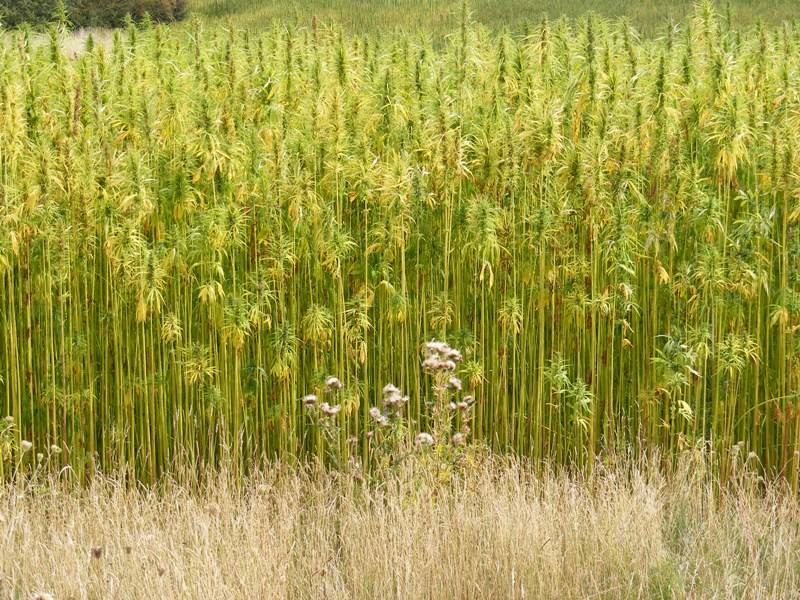
Brief overview of the history of industrial hemp
The most antic discovery of textiles made of hemp, which is known, dates back to the year 2800 B.C in China, but the truth is that it was since the 17th century when its use expanded to manufacture the sails of the ships, and to make cords and ropes, reaching to use tons of this material for a single ship. To this day, hemp has been replaced by cotton, a material less productive and more difficult to gather and to process, so its production generates many more waste and CO2 (hemp "cleans" as much CO2 as that, which is generated in its manufacturing, transport and processing, reaching even to negative values; it cleans more CO2 than it generates), in addition to having to use more chemical materials for bleach it and all for questions of the interest of third parties, and by the inertia of the industry.
What is certain is that a hectare of cannabis produces the double of fiber than a hectare of cotton for much less cost and effort, in addition hemp needs far fewer chemical pesticides that degrade the culture place in the long run, also its preservation, once harvested, is much easier because it doesn’t contains proteins in its fibers that need external preserving agents
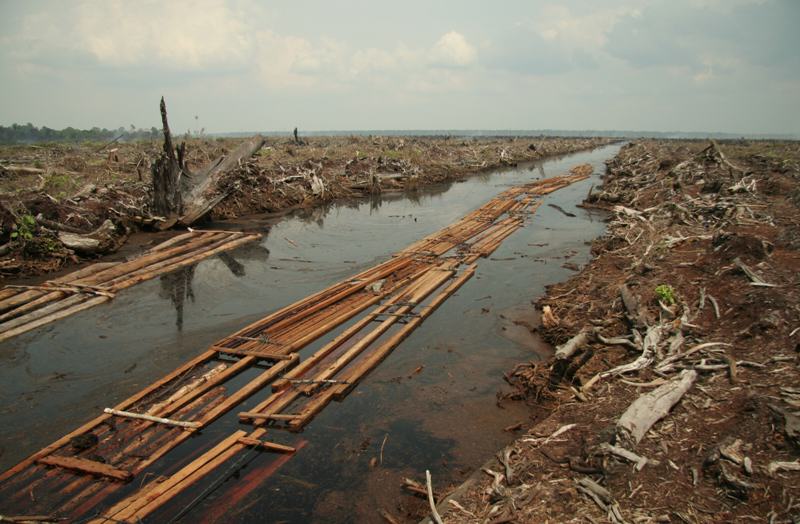
Moreover it’s 100% recyclable and biodegradable at every stage of its life, from the moment of being a plant until after being used and processed into any of its versions. Of hemp it can be made composites twice as resistant than wood, including bioplastics of high strength, used in the manufacture of automobiles.
Regarding its use in the paper industry, we could say that we are in front of the solution to the deforestation that creates this sector, as being a plant with a very fast growth, annual, as any other agricultural crop, which produces an enormous amount of cellulose, fiber and oils, all at the same time, avoiding having to cut down trees, which grow much more slowly and don’t allow a clear balance between production and consumption.
One hectare of hemp produces up to 4 times more material than one hectare of trees, allowing to create more resistant paper than that made of wood without need of using acid or chlorine. It’s possible to recycle it up to 7 times, while the wood pulp only allows to processed up to 4 times.
In regard to the construction sector, its greatest advantages are in its great capacity to act as thermal, acoustic and electromagnetic, insulator saving energy in buildings in which they are used and at the time it can be reused once demolished the building grinding it and manufacturing blocks of fiber or mortars with it, showing like so its high rate of sustainability.
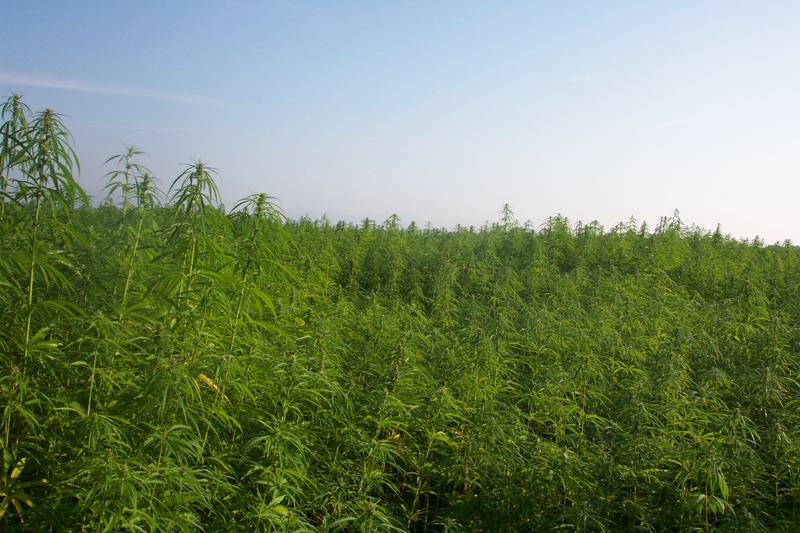
In addition, it’s economical, resistant to mold and attacks of rodents and insects, as well as to flames, which makes it extremely suitable to make walls with it. It’s also breathable, it respires, providing to the buildings made with it a great thermal and climatic control and balance at the time that it auto-regulates the humidity, dimming it if it’s too high and allowing it to pass if it’s too low, avoiding so the generation of humidity inside the structure.
Hempcrete, Cannabric and Cannapanel, hemp bricks and concrete
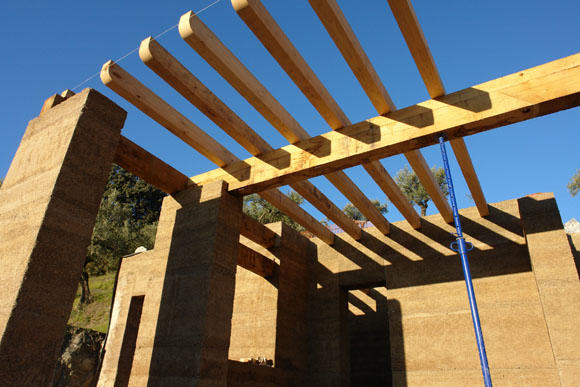
Hempcrete (Hemp+Concrete=Hempcrete) or concrete of hemp is a material composed of fibrous hemp tow mixed with natural lime and water, obtaining so a plaster with a consistency similar to cement, which can be molded and used to make highly insulater walls, bricks, or foundations with only the half of weight than concrete.
It’s up to 7 times stronger and 3 times more malleable, and as it ages and during the exposure to weather elements it will petrify further increasing its strength and durability, without losing the mentioned malleability. It won’t open cracks due to small earth movements it don’t need expansion joints. The sum of all these properties make it potential to last for thousands of years.
To use it, it’s necessary to create a wood structure for the walls or surface to build, as if it were a formwork, but without being moved away once the Hempcrete is dry. This is formwork is filled up with the cannabis cement paste and is coated with a light Hempcrete, to increase its insulating power and give it more homogeneous finish, covering the wood. This decorative layer can be covered with natural paints and stuccos of all kinds.
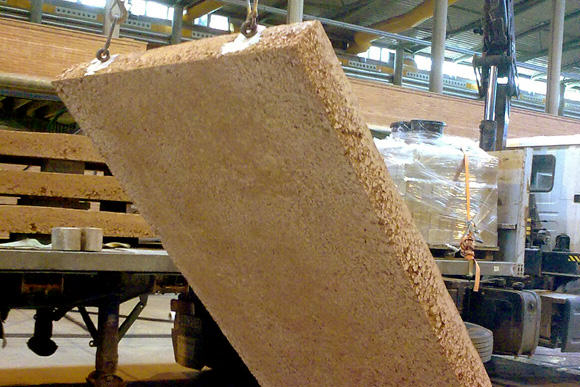
As in Spain the timber resources are relatively scarce and there don’t exist a so great infrastructure for its processing and production on an architectural level as in other countries, they had to opt in find other solutions to build with hemp and so it was founded the company Cannabric in Guadix by the German architect Monika Brümmer.
Cannabric manufactures bricks made of hemp fiber of 30cm thickness, minerals and natural hydraulic lime using an artisanal method, these bricks then can be used as it were traditional bricks with the same resistance but much more ecological.
Once the mortar is done they give them shape, then they let them dry in the sun, outdoors for 28 days without need to cook them in an oven a decreasing so in a radical way the necessary energy use to manufacture them. In addition, a lesser need of binder products (cement, connection plaster between them) than in construction models with wooden structure, so that in addition to saving the cost of the wood, we avoid spending so much manufactured material using energy, increasing the sustainability of the building.
This company also offers Cannapanel, prefabricated panels for the construction of industrial buildings, similar to prefab concrete panels, that are commonly used in the present, but made of hemp fiber, ground and straw.
Insulation made of hemp fibres
Within this category we find materials in the form of a roll of hemp fiber of different widths and thicknesses, intended to replace the rock or glass wool in its purpose as insulation in the walls or under parquet flooring.
We can also get and use it in loose fiber format, to make mortars with it or to fill air chambers, or in rigid panels, according to the needs of the building in question.
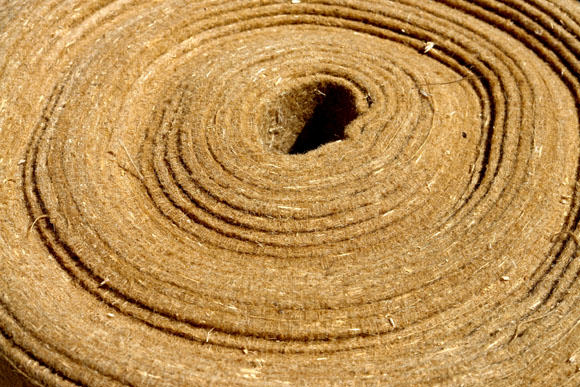
Disavantages of the bioconstruction with hemp
So, it must be said that not all is rosy in the bio-construction with hemp, because the price of these items is something more elevated than the traditional clay bricks: while these cost approximately 0.10 € per unit, each Cannabric block can cost around 1 €, slightly increasing the final cost of the construction.
On the other hand, this increase in price is rapidly amortized by all properties and advantages that we have been discussing, understanding it as an investment in the long run, with cheap and little maintenance, allowing us to live in a House that follows our expectations at an ecological level, as well as being very comfortable, warm and of rustic, beautiful and magical finish.
We hope that, for the interest of everyone, the industry will adapt to this type of new materials and that the price is going to normalize, allowing us to advance from a rigid and industrialized building system to a more sustainable one, human and natural, adapted to all budgets.
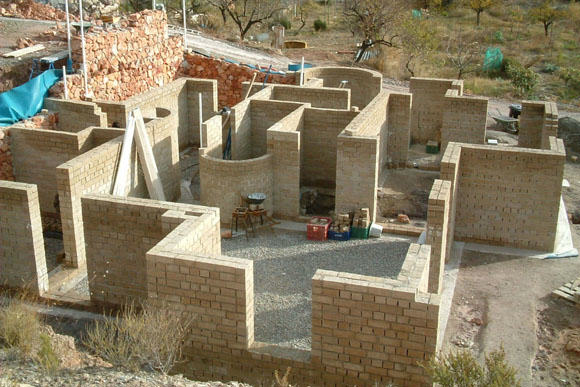
Sources:
- Cementonatural.com
- Cannabric.com
- Elmundo.es
- Unaus.eu
- Enconstruccionblog.wordpress.com
- Ecogaia.com
- Photos: Wikipedia and Cannabric





























































